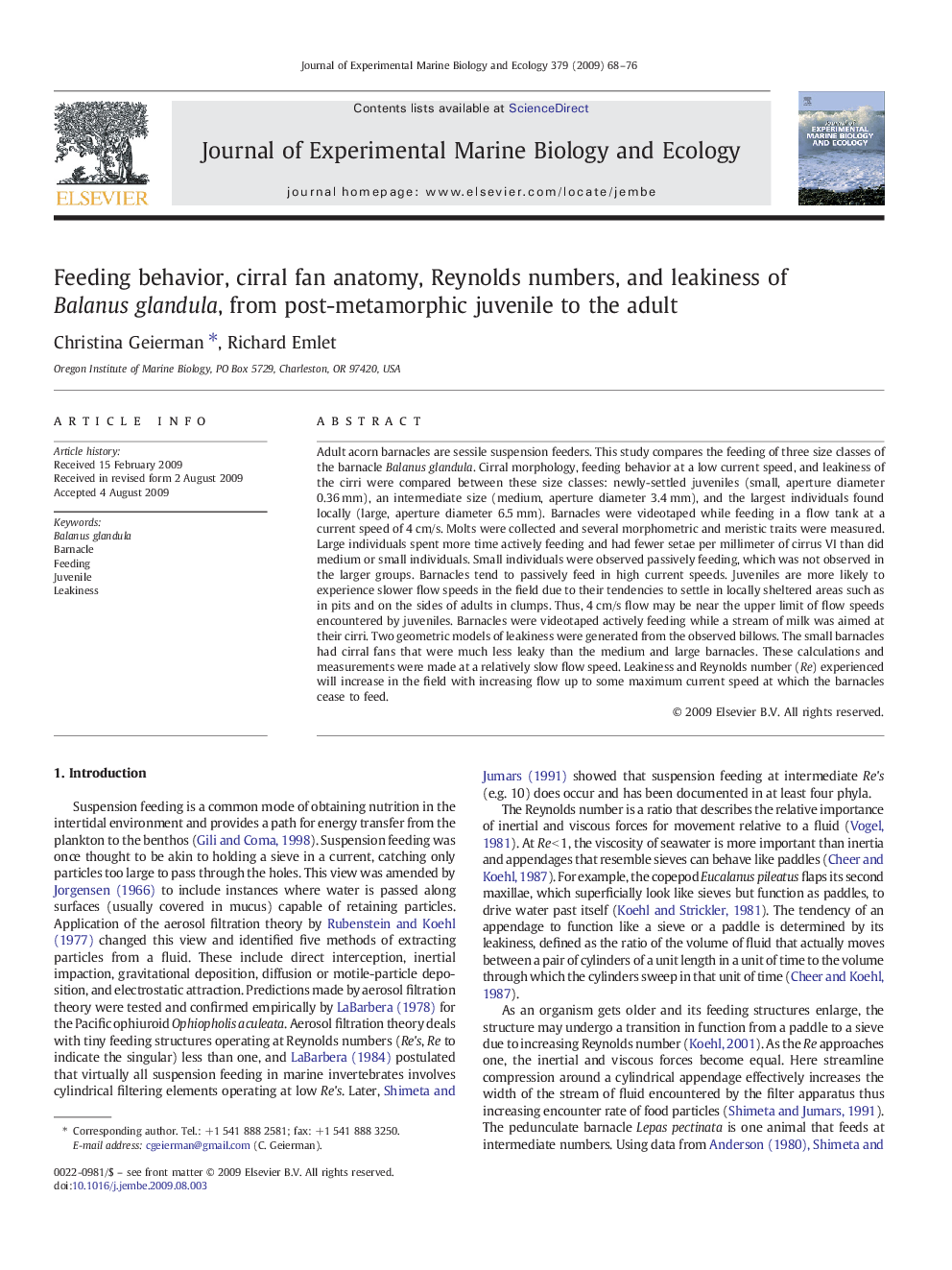| کد مقاله | کد نشریه | سال انتشار | مقاله انگلیسی | نسخه تمام متن |
|---|---|---|---|---|
| 4396859 | 1618478 | 2009 | 9 صفحه PDF | دانلود رایگان |

Adult acorn barnacles are sessile suspension feeders. This study compares the feeding of three size classes of the barnacle Balanus glandula. Cirral morphology, feeding behavior at a low current speed, and leakiness of the cirri were compared between these size classes: newly-settled juveniles (small, aperture diameter 0.36 mm), an intermediate size (medium, aperture diameter 3.4 mm), and the largest individuals found locally (large, aperture diameter 6.5 mm). Barnacles were videotaped while feeding in a flow tank at a current speed of 4 cm/s. Molts were collected and several morphometric and meristic traits were measured. Large individuals spent more time actively feeding and had fewer setae per millimeter of cirrus VI than did medium or small individuals. Small individuals were observed passively feeding, which was not observed in the larger groups. Barnacles tend to passively feed in high current speeds. Juveniles are more likely to experience slower flow speeds in the field due to their tendencies to settle in locally sheltered areas such as in pits and on the sides of adults in clumps. Thus, 4 cm/s flow may be near the upper limit of flow speeds encountered by juveniles. Barnacles were videotaped actively feeding while a stream of milk was aimed at their cirri. Two geometric models of leakiness were generated from the observed billows. The small barnacles had cirral fans that were much less leaky than the medium and large barnacles. These calculations and measurements were made at a relatively slow flow speed. Leakiness and Reynolds number (Re) experienced will increase in the field with increasing flow up to some maximum current speed at which the barnacles cease to feed.
Journal: Journal of Experimental Marine Biology and Ecology - Volume 379, Issues 1–2, 31 October 2009, Pages 68–76